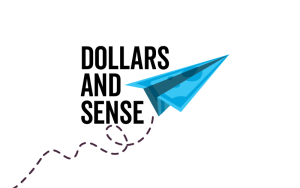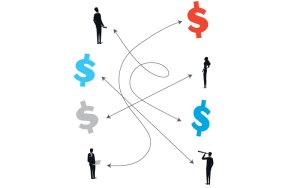How digital has changed the job responsibilities of the graphic designer
Pre-press production has come a long way in the last 30 years.
If you’re one of “those” graphic designers whose skillset was dramatically changed when digital technology was introduced into the field of printing and design, you understand. For the non-designers out there, once upon a time… in a land before computers, it took A LOT of graphics professionals to bring a printed piece to completion.
The Transition from Manual to Digital Design
With digital here to stay (and the ongoing development of software tools to simplify and inspire creativity), the landscape of pre-press has changed dramatically, making the time-honored skills of paste up and mechanical a lost art.
And while digital design tools have made great strides for the field, there is simply nothing like slicing apart bits and pieces of typography and reassembling – with art – pasted onto a board, with a tissue overlay covered in a myriad of instructions for the camera operator and stripper to follow. And then magically seeing a finished, beautifully-crafted print product.
The transition to digital began in the mid 1980’s, when manual pre-press production skills were slowly taken over by Apple Macs – along with accompanying software – to execute paste up and mechanical tasks with unrivaled precision and speed that could never be achieved with a ruling pen, t-square, rubber cement and a non-repro blue pencil.
Related: How to Write a Creative Brief Your Designer Will Love
From our modern perspective, some of the job descriptions from those days may seem unreal, considering the intangible and infinite world of your computer screen, but there are countless talented designers who have lived to tell the tale!
To give you an idea of the leaps and bounds made through pre-press history, check out these job titles – once filled by craftsmen and graphics professionals – that were once necessary to bring a print project to completion.
Pre-Press Job Titles: Then & Now
Typesetter
THEN: Designers calculated how much text would fit into a given layout and sent the mathematical specifications – including font, point size, leading, line length – to a typesetter who set the type. Clients were charged by the keystroke! So designers were careful to ensure the copy was typo-free before sending their typed pages to the typesetter for input. The finished text was then returned in galleys (black text on white paper) for paste up and layout. Two sets were sent to the designer… in case you accidentally sliced through a letter with your Exacto knife or needed to make last minute type corrections.
NOW: Designers do the typesetting. Importing text into your layouts AND getting everything to fit have become easily managed by WYSIWYG and key strokes.
Proofreader
THEN: A once-integral part of the process, they checked the galleys to make sure the content was keyed in to match the typewritten text sent by the client. Remember that keystroke count? Proofreaders needed to make sure the copy was correct to prevent any errors and make corrections before clients were charged.
NOW: What’s a proofreader? Spellcheck has fundamentally replaced the art of proofreading, enabling designers make edits in the file on the fly.
Related: What Your Graphic Designers Need to Hit the Mark
Camera Operator
THEN: Once the mechanicals were completed, the mechanical boards and all accompanying art (original artwork, photography, illustration) and photos were sent to the printer for pre-press production. Camera operators would take the boards and art photograph them according to the designers’ instructions, and then provide the file negatives to the next craftsman in the process: the Stripper. More on that title next.
NOW: The designer receives original art work which has been scanned or supplied electronically. No more worrying about accidentally destroying an original piece of art while in transit!
Stripper
THEN: The job of stripping involves arranging and joining film negatives as part of the process of preparing printing plates. Negatives were set up in a pattern to allow a printing press to print 4, 8, 16 or 32 pages at a time, front and back, which are then folded to produce a brochure or book with the correct pagination.
NOW: Film no longer exists and pagination is accomplished through software. The designer is responsible for making sure page count is correct before sending to pre-press operator for pagination and platemaking.
Courier
THEN: These guys were integral to making the process work. If you couldn’t get your art where it needed to be next and in one piece, you were out of luck. Courier services picked up and delivered art packages at all hours of the day and night. Needless to say, deadlines had a much longer lead time than today. Pretty much EVERYTHING in the process had a much longer lead time.
NOW: Practically all art materials are sent and received electronically by the designer, account rep, customer service rep or pre-press operator. No bicycles, cars or gas needed – just electricity and a computer.
Modern-Day Pre-Press
Pre-press technology has been simplified over the years, allowing each of these tasks to be accomplished much faster. Today, all of the tasks and positions mentioned above have been consolidated and placed in the hands of two professionals: the graphic designer and the pre-press operator.
Do you need some expert graphic design work? We can help you with that! Contact us today to get beautiful, professional design for your print or digital projects.




